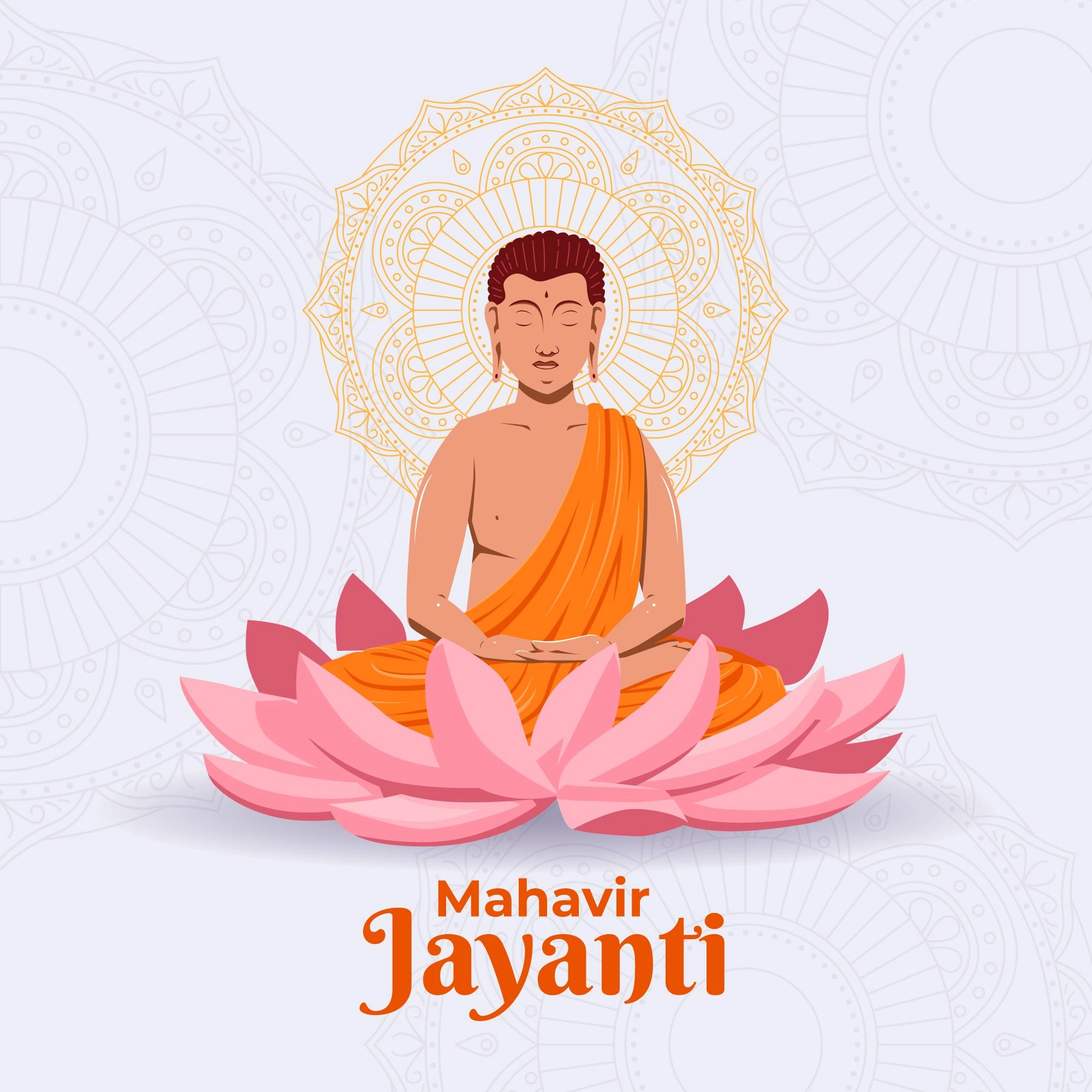Mahavir Jayanti, one of the most important festivals in Jainism, marks the birth anniversary of Lord Mahavira, the 24th Tirthankara. Celebrated with immense devotion and enthusiasm, this festival holds great significance for Jains around the world. This article provides a detailed guide on how to celebrate Mahavir Jayanti, incorporating traditional practices, modern adaptations, and the essence of Lord Mahavira’s teachings.
Understanding the Significance of Mahavir Jayanti
Who Was Lord Mahavira?
Lord Mahavira, also known as Vardhamana, was born in 599 BCE in the region that is now Bihar, India. As the 24th and last Tirthankara, he played a crucial role in shaping Jain philosophy and promoting principles such as non-violence (ahimsa), truth (satya), non-stealing (asteya), celibacy (brahmacharya), and non-possessiveness (aparigraha). His teachings emphasize the importance of living a life of renunciation, self-discipline, and ethical conduct.
The Importance of Mahavir Jayanti
Mahavir Jayanti is celebrated to honor the birth and teachings of Lord Mahavira. It is a day of reflection on his principles and their application in daily life. For Jains, this festival is an opportunity to renew their commitment to the path of righteousness and spirituality.
Traditional Ways to Celebrate Mahavir Jayanti
Preparations for the Festival
- Cleaning and Decorating Homes: In preparation for Mahavir Jayanti, Jains thoroughly clean their homes and temples. They decorate these spaces with flowers, rangoli, and colorful lights to create a festive atmosphere.
- Special Attire: Devotees dress in traditional attire, often wearing white clothes symbolizing purity and peace.
Rituals and Ceremonies
- Puja and Prayers: Devotees perform special pujas (prayers) dedicated to Lord Mahavira. These rituals often include chanting mantras, singing hymns, and offering fruits, sweets, and flowers.
- Abhisheka (Bathing Ceremony): The idol of Lord Mahavira is bathed in water, milk, and other holy substances in a ritual known as Abhisheka. This ceremony symbolizes purification and renewal.
- Processions: In many Jain communities, grand processions are organized. Devotees carry the idol of Lord Mahavira on a chariot, accompanied by music, dance, and chants. These processions often pass through streets decorated with banners and flags.
- Fasting and Meditation: Many Jains observe fasting on this day as a form of penance and spiritual discipline. Meditation and introspection are also integral parts of the celebration, allowing devotees to connect deeply with the teachings of Lord Mahavira.
Community Involvement
- Charity and Donations: Acts of charity are encouraged during Mahavir Jayanti. Devotees donate food, clothes, and money to the needy. Some also organize free food distribution (Anna Dana) and medical camps.
- Lectures and Discourses: Jain scholars and monks deliver lectures and discourses on Lord Mahavira’s life and teachings. These sessions provide valuable insights and inspire devotees to incorporate his principles into their lives.
Modern Adaptations of Celebrating Mahavir Jayanti
Virtual Celebrations
In recent years, especially due to global events like the COVID-19 pandemic, many celebrations have moved online. Virtual pujas, webinars, and online discourses allow devotees from different parts of the world to participate in the festivities.
Environmental Initiatives
Aligning with the principle of non-violence towards all living beings, many Jains undertake environmental initiatives during Mahavir Jayanti. These include planting trees, cleaning up local areas, and promoting sustainable living practices.
Educational Programs
Educational institutions and Jain organizations often organize essay competitions, quizzes, and art exhibitions focused on Lord Mahavira’s life and teachings. These programs aim to spread awareness and understanding among the younger generation.
Key LSI Keywords and Their Importance
- Ahimsa (Non-Violence): Central to Jainism and Mahavir Jayanti, ahimsa emphasizes respect for all forms of life.
- Tirthankara: Refers to spiritual teachers in Jainism who have achieved liberation and guide others.
- Aparigraha (Non-Possessiveness): Encourages a simple, minimalist lifestyle free from material excess.
- Dharma: Represents the moral and ethical code of conduct.
- Karma: The law of cause and effect, influencing one’s future based on past actions.
- Moksha: Liberation from the cycle of birth and death, a core goal in Jainism.
- Jain Temples: Places of worship where many Mahavir Jayanti celebrations occur.
- Pravachan: Religious discourses delivered by Jain monks or scholars.
Conclusion
Mahavir Jayanti is not just a celebration of Lord Mahavira’s birth but a reaffirmation of his timeless teachings. It is a day to reflect on the principles of non-violence, truth, and compassion, and to incorporate these values into our daily lives. By participating in traditional rituals, engaging in acts of charity, and embracing modern adaptations, devotees can celebrate this auspicious day with devotion and purpose. Whether through grand processions, quiet meditation, or virtual gatherings, the essence of Mahavir Jayanti remains the same: honoring a spiritual legacy that continues to inspire millions.
As we celebrate Mahavir Jayanti, let us strive to live by the noble principles of Lord Mahavira, fostering a world of peace, harmony, and respect for all living beings.


